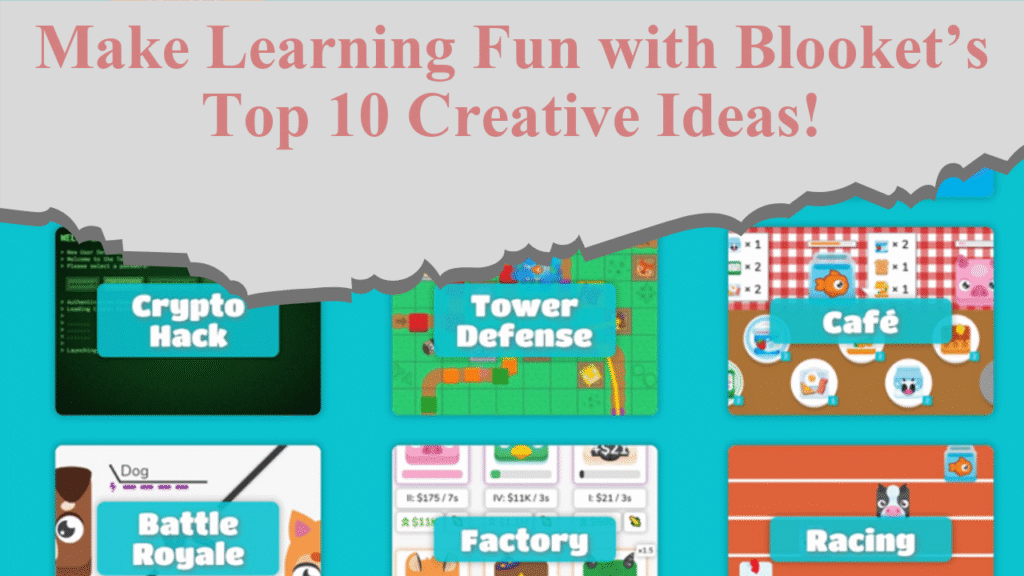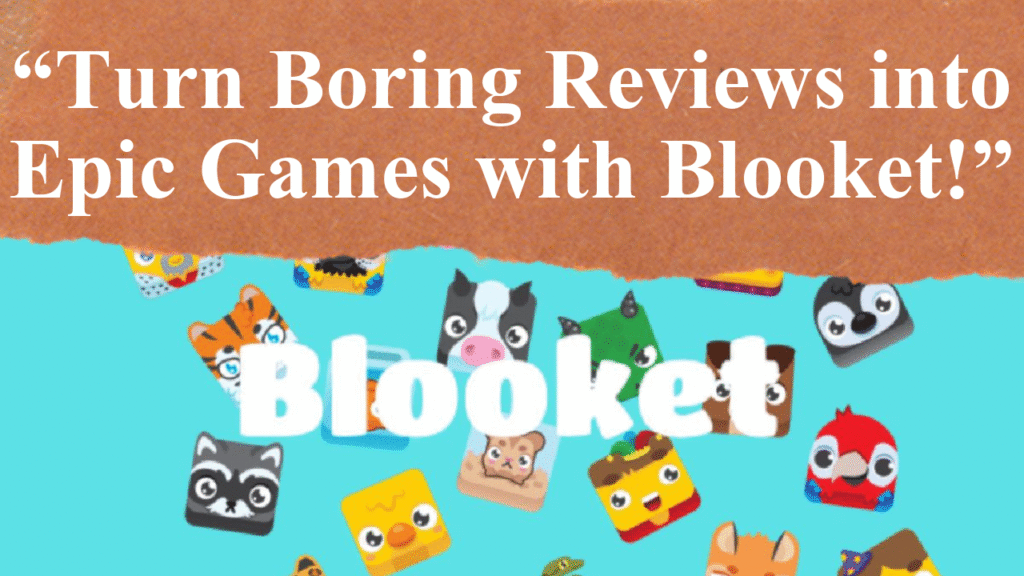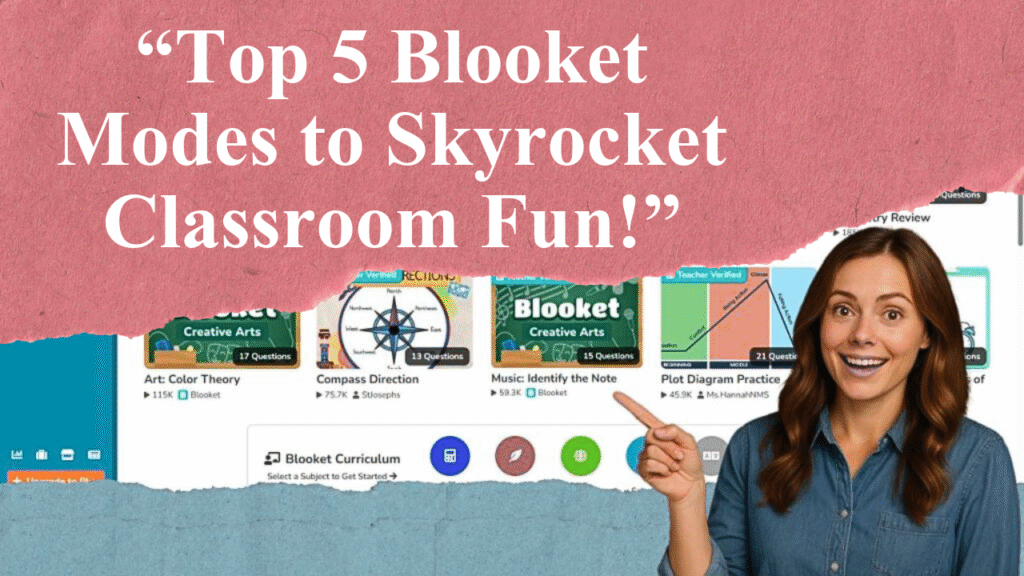Blooket transforms ESL learning by integrating gamification, boosting student engagement and vocabulary mastery. Its interactive, game-based platform uses points, leaderboards, and badges to create a fun, competitive environment. Research shows Blooket enhances motivation and comprehension, making it a powerful tool for ESL educators to foster language skills effectively.
Blooket’s Role in Transforming ESL Education
Blooket, an innovative online platform, has emerged as a game-changer in English as a Second Language (ESL) instruction by leveraging gamification to engage learners. Designed to make learning interactive and enjoyable, Blooket incorporates game mechanics such as points, leaderboards, levels, and badges, creating a dynamic environment that motivates students to actively participate in their language acquisition journey. This article explores how Blooket enhances ESL learning, supported by real-time insights and research findings.
Gamification in ESL: Why It Works
Gamification, defined as the application of game-design elements in non-game contexts, has gained traction in education for its ability to increase student engagement and motivation. In ESL classrooms, where learners often face challenges like anxiety, low motivation, and difficulty retaining vocabulary, gamification offers a solution by transforming traditional lessons into interactive experiences. Blooket’s game-based approach aligns with theoretical frameworks like Self-Determination Theory (SDT), which emphasizes autonomy, competence, and relatedness as drivers of motivation. By providing instant feedback and rewards, Blooket fosters a sense of accomplishment, encouraging students to persist in their learning.
Blooket’s Features and Their Impact on ESL Learning
Blooket allows educators to create or use pre-made question sets tailored to ESL curricula, covering vocabulary, grammar, reading comprehension, and more. Students engage in competitive or collaborative game modes, such as “Tower Defense” or “Crypto Hack,” where they answer questions to earn points or progress in the game. These modes make learning feel like play, reducing anxiety and increasing participation. A 2024 study involving 40 junior high school students in Indonesia found that Blooket significantly enhanced vocabulary mastery, with students reporting higher motivation due to the platform’s fun and competitive nature. Teachers noted that Blooket’s analytics helped track progress and identify areas for improvement, making it a versatile tool for formative assessment.
Real-Time Engagement and Feedback
Blooket’s real-time feedback mechanism is a key feature for ESL learners. As students answer questions, they receive immediate corrections, which is crucial for reinforcing language skills. For instance, when learning new vocabulary, students can see correct answers instantly, helping them internalize meanings and spellings. The platform’s leaderboards and badges tap into students’ intrinsic and extrinsic motivation, fostering a sense of achievement. In a survey of 10 teachers in Serang, Indonesia, 90% agreed that Blooket’s interactive elements made vocabulary acquisition more effective and engaging compared to traditional methods.
Addressing Challenges in ESL Classrooms
ESL learners often struggle with engagement due to the complexity of language acquisition. Blooket addresses this by creating a low-pressure environment where mistakes are part of the learning process. The platform’s game-like interface reduces language anxiety, as students focus on earning points rather than fearing errors. Additionally, Blooket’s flexibility allows teachers to customize content for diverse proficiency levels, ensuring inclusivity. For example, a teacher can design a game targeting basic vocabulary for beginners or complex sentence structures for advanced learners, catering to individual needs.
Potential Drawbacks and Considerations
While Blooket is highly effective, it is not without challenges. Reliable internet access is essential, as the platform operates online, which can be a barrier in areas with limited connectivity. Additionally, some students may find the competitive aspect overwhelming, potentially leading to disengagement if not managed carefully. Educators must balance competition with collaboration to create a supportive environment. Research suggests that teacher training is crucial for maximizing Blooket’s potential, as effective implementation requires aligning game content with learning objectives.
Blooket in Practice: Real-World Applications
In real-world settings, Blooket has been adopted by ESL educators globally to enhance classroom dynamics. For instance, in a Malaysian ESL classroom, teachers used Blooket to teach grammar, resulting in improved student participation and retention of grammatical rules. The platform’s ability to integrate with other tools, like Google Classroom, further streamlines its use in blended learning environments. Blooket’s versatility extends beyond vocabulary to include reading comprehension and speaking practice, where students can engage in role-playing scenarios or quizzes that promote communicative fluency.
The Future of Blooket in ESL Education
As technology continues to shape education, platforms like Blooket are paving the way for innovative ESL instruction. Its ability to combine fun with learning aligns with the needs of modern learners, particularly digital natives who thrive in interactive environments. Ongoing research continues to explore Blooket’s long-term impact on language proficiency, with preliminary findings indicating sustained improvements in engagement and skill acquisition. By integrating gamification, Blooket not only makes ESL learning enjoyable but also equips students with the confidence and skills needed for effective communication.
Disclaimer: This article is based on recent studies, educational reports, and insights from online platforms. Data is sourced from reputable journals and research papers, including studies published on ResearchGate and Frontiers in Education. Always verify information with primary sources for accuracy.




